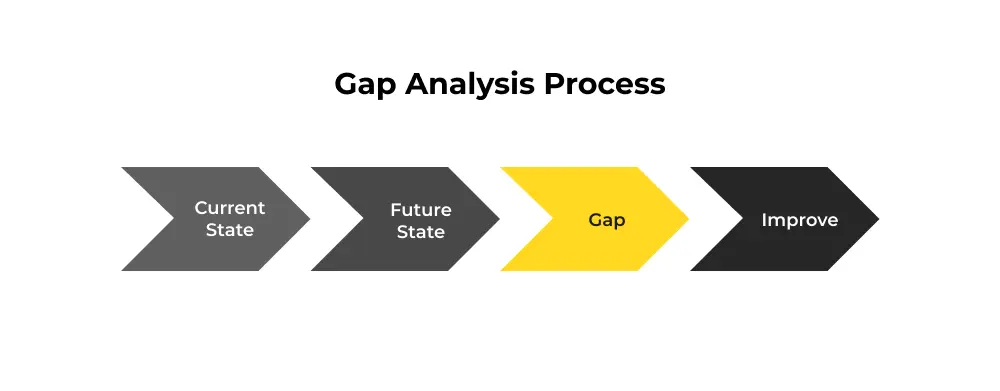
Sign up to receive latest insights & updates in technology, AI & data analytics, data science, & innovations from Polestar Analytics.
Editor's Note - This blog post will explore the need for workforce planning and analytics in the ITeS industry. We will discuss how this practice can help companies optimize their workforce management strategies and make data-driven decisions about their employees.
The ITeS industry (Business Consulting, IT consulting, BPOs, KPOs, LPOs) is a rapidly growing sector that thrives on innovation and adapting to changing market dynamics. In this fiercely competitive landscape, companies in the ITeS sector need to embrace new strategies for the workforce to maintain a healthy company culture and adapt the HR processes to the ‘new normal’ lifestyle.
Moreover, with the sword of global recession above the world's economy, finding skilled talent within the workforce pool is like finding a needle in a haystack.
Companies are now addressing this elephant in the room and turning their heads toward workforce planning and analytics to leverage data-driven insights to optimize workforce management. This approach goes beyond traditional workforce management practices by utilizing data to measure the impact of workforce behavior and related factors on overall business performance.
Companies can make informed decisions about their workforce by analyzing a wealth of data, including employee performance, productivity, engagement levels, churn rates, and skills.
Complex Workforce DEI
Diversity, equity, and inclusion (DEI) have been hot and trending topics nowadays. HR heads are prioritizing DEI to increase innovation, creativity, and problem-solving abilities, as diverse perspectives bring a broader range of ideas and approaches.

As companies constantly move towards a global footprint, managing workforce DEI is also becoming more prevalent.
Here are some challenges CHROs are concerned with today in the context of workforce DEI:
Payroll Disparity
The issue of payroll disparity is also one of the areas that has been receiving much attention in recent months. CHROs are increasingly focusing on the widening pay disparities between male and female employees and between racial categories. HR heads have an Unenviable task of explaining and assuaging the employees who are left out of the higher pay brackets.
Some key considerations regarding payroll disparities include:
Data Inaccuracy
One of the critical hurdles in utilizing HR analytics for recruitment is the assurance of accurate, relevant, and up-to-date data. Inaccurate or incomplete data can lead to misleading conclusions and flawed recruitment strategies. Therefore, organizations need to prioritize data management processes and invest in advanced technologies to ensure the integrity and reliability of their data.
Moreover, organizations also have the need to navigate complex data privacy regulations and ensure that they are compliant with all applicable laws. Global Talent Management
In human resources, global talent management refers to the use of HR actions to ensure access to needed talent by multinational enterprises competing in a global environment. Each country not only has different employment laws, but different customs, cultural nuances, and business laws.
HRs face a myriad of different challenges when working with a company with a global footprint:
Organizations should plan and prepare to seize the opportunities resulting from the tectonic technological shifts post this pandemic.
Workforce analytics can assess the skills and competencies of the existing workforce such as current skill inventory, required skill sets, and employee proficiency levels to identify the future plan of action. The aim at this stage is to assess where we are and where we want to go by identifying the various gaps including skills, competencies, etc. that would need to be plugged in to achieve the organization’s goals.
Workforce analytics leverages machine learning and NLP to define relationships between skills and present insights that allow HR heads to identify vacuums and skill gaps that need to be addressed.
Ultimately, a gap analysis can help address important areas of focus that can have a substantial impact on the ITeS sector:

For an HR head, it is crucial to find out how the employee's behaviors and factors affect them. Talent retention and churn continue to be a high mountain peak for HRs to climb. They need a good look into the retention and churn ratio within their organization, the number of employees who leave the organization, and analyze the factors that lead up to it.
Workforce planning allows organizations to proactively identify the skills and competencies they need to succeed in future projects and client engagements. Here’s how firms can track and manage churn and retention with Workforce planning and analytics.
Perform activities like talent strategy management, workforce planning, and compensation modeling in a connected planning approach.
Optimizing Cost and Payroll
HRs have an urgency to move to an AI-based model that enables continuous planning and precise tracking of team-level changes, leading toward easier budget tracking.
Addressing today’s HR challenges with traditional systems requires an army of people and could take weeks to accomplish a task. Not to mention the increasing cost and time that comes with it.
By analyzing patterns and evaluating compensations, HRs can plan and predict better retention strategies and salary brackets for new employees. Evaluating differences in payroll also significantly helps in addressing the problem of payroll disparity among employees.
Performance analysis and management
Workforce planning and analytics are often also used for performance analysis and management to optimize employee performance and assure they are fully equipped to perform their jobs well.
On an individual level, HR-based planning and analytics help manage tasks, track performance, and create motivation strategies. Organizationally, it helps shift work in the right and most optimal direction.
Some areas that HR focuses on for performance analysis and management are:
Objective assessment: By analyzing metrics such as productivity, quality, and customer satisfaction, organizations gain a comprehensive understanding of individual and team performance.
Identifying top performers: Performance data analysis allows organizations to recognize high-performing employees, reward them appropriately, and address skill gaps or process inefficiencies.
Benchmarking: Workforce planning and analytics facilitate performance benchmarking against industry standards or internal benchmarks. This helps set performance expectations and drive continuous improvement efforts.
Predictive analytics: Forecasting future performance based on historical data allows managers to proactively allocate resources and optimize performance.
Demand Analysis
Demand analysis and forecasting provide organizations with the ability to anticipate future workforce requirements and align their talent acquisition, training, and resource allocation strategies accordingly. Demand analysis is a crucial process in workforce planning and analytics that enables organizations to predict and anticipate the future composition of their workforce.
Demand analysis in workforce planning involves the comprehensive assessment of internal and external factors to forecast the future workforce requirements of an organization.
Demand analysis helps you answer the questions like:
Supply Analysis - the first and foremost step is assessing where the company stands. It is a vital step to form a strategic workforce plan, as 47% of HR personnel are unaware of the skills gaps within their workforce, according to a survey by Gartner.
Executives can leverage Analytics to:
Solution Analysis - It involves evaluating potential strategies and solutions to address workforce gaps and meet future demands. It helps organizations identify the most effective actions to optimize workforce planning.
Solution analysis is a complicated approach that requires a deep understanding of the company’s know-how. Hence, conducting sessions with the client to understand the nuances of their critical KPI is required.
Our Discovery workshop, for example, is designed to review and assess the requirements and current state of your analytics infrastructure. These sessions include several discussions and brainstorming to better understand the vision and areas of improvement.
Solution analysis can help you to:
Calculate and predict Churn in your organization to prevent loss of talent pool and save capital and effort to improve ROI.
It's no secret that workforce planning and analytics are revolutionizing the way we manage our human resources and make decisions that promise statistical results. Workforce analytics offers powerful tools to overcome challenges in effective workforce planning. With data as a key component of workforce planning, organizations can make informed decisions and optimize their human resources for enhanced performance and sustainable success.
Polestar Analytics has been helping big giants and SMEs to deliver ground-breaking planning and analytics solutions. Our team of experts possess a deep knowledge of the entire employee lifecycle from recruitment to retirement and are well-equipped to deliver results that are reliable and offer a tangible impact.
About Author

Marketing Consultant
Always look for insight as to how you can better structure data within your business, there's surely a nugget of wisdom out there for you